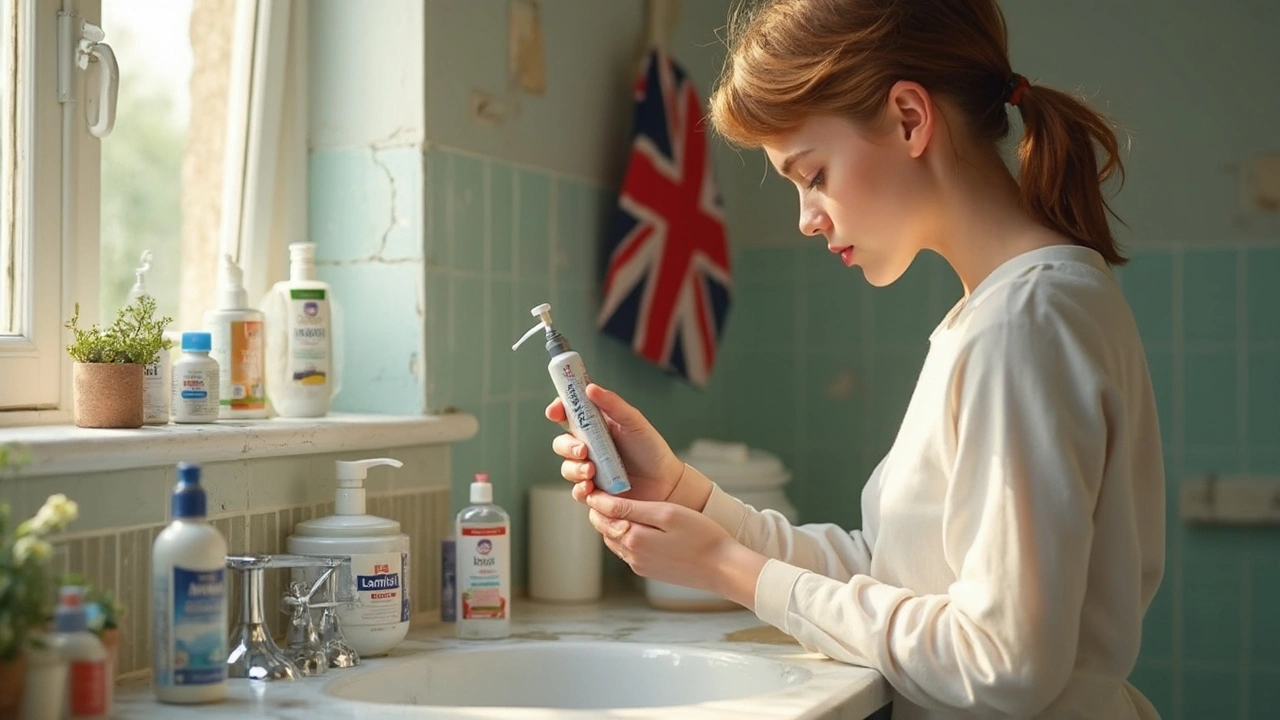Athlete's foot: quick fixes, treatments, and how to stop it coming back
Athlete's foot is a fungal infection that loves warm, damp places—think sweaty socks and tight shoes. You’ll notice itching, peeling or cracking skin, and sometimes a burning feeling. Most cases clear with simple over-the-counter antifungal creams and smarter foot care. Want fast, practical steps that actually work? Keep reading.
Treatment: what works
Start with an OTC antifungal cream. Look for terbinafine (often sold as Lamisil), clotrimazole, or miconazole. Apply to clean, dry skin once or twice a day and keep treating for the full course—usually one to a few weeks—until the rash disappears and a few days after. Treat the whole foot, not just the sore spot: between toes, soles, and the top of the foot.
If the infection won’t clear, spreads to the nails, or keeps coming back, see a doctor. They may prescribe oral antifungals like terbinafine tablets or itraconazole. Oral drugs work well for nail or severe infections but need medical checks for interactions and liver safety. Avoid steroid creams unless a dermatologist tells you to—steroids can hide symptoms and make fungus harder to treat. For cracked, oozing skin a doctor may add an antibiotic if a bacterial infection is present.
Prevention and simple foot care
Keeping feet dry and breaking the cycle of reinfection matters more than any miracle cure. Wear moisture-wicking socks and swap them when they get damp. Rotate shoes so each pair has 24–48 hours to dry. Choose breathable shoes and avoid wearing the same tight pair all day. In public pools and gym showers, use flip-flops or shower shoes.
Wash socks, towels, and bath mats in hot water after an infection. Disinfect shoes with antifungal sprays or powders and replace old insoles. Don’t share socks, towels, or nail tools. Simple habits—drying between toes after showering, using a light antifungal powder, airing shoes—cut relapses a lot.
Most relapses come from spores hiding in shoes, socks, or carpets. Fungal spores can survive on surfaces for months. Spray shoes, wash washable items on hot cycles, and toss old, moisture-trapping socks. If someone in your household has athlete's foot, treat them too and avoid shared laundry until the infection clears. Those small daily habits add up quickly.
If your rash doesn’t improve after 2–4 weeks of correct OTC treatment, or if the infection reaches toenails, see a doctor. Also get help sooner if you have diabetes, poor circulation, a weakened immune system, or signs of bacterial infection like increasing redness, swelling, or pus. A clinician can prescribe oral meds, test the rash, and rule out other causes.
Related reads on GenericCures.com: Voriconazole: Best Treatment for Invasive Fusariosis — for severe fungal infections. Holistic Anti-Inflammatory Strategies — tips to calm swollen skin. Search our site for 'tinea' or 'antifungal' for more guides and FAQs and tips.
Lamisil Uses, Side Effects, and Success for Treating Fungal Infections

Uncover how Lamisil works, what makes it a favorite for fighting stubborn fungal infections, and what real people wish they knew before using it. This article explores the ins and outs of Lamisil for athlete’s foot, nail fungus, and more—backed by facts, anecdotes, and plenty of practical tips. Learn when Lamisil might be your best bet, when to watch out, and how to get the most from this well-known antifungal. Whether you’re considering a prescription or over-the-counter version, this guide gives you everything you need to know—without any medical jargon.
- June 13 2025
- Tony Newman
- 20 Comments
